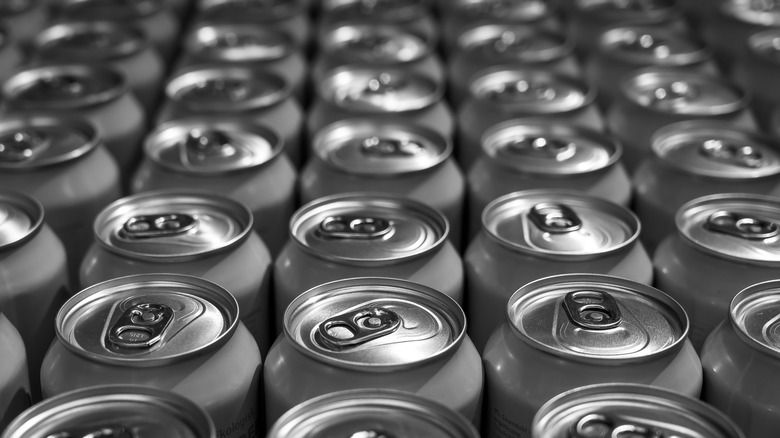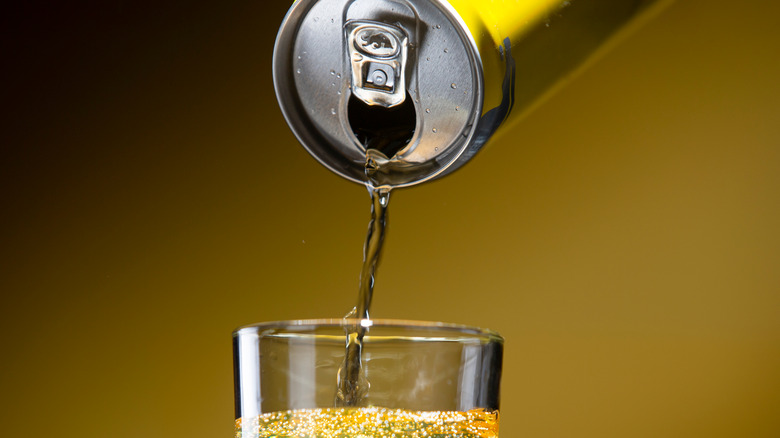This Was The First Canned Soft Drink
Today, just about any beverage, including cocktails, can be found in a conveniently canned form. However, this convenience wasn't always so common. To have a carbonated drink that was easily stacked, transported, and, most importantly, kept its fizzy flavor is actually a fairly recent invention.
Canned goods had to walk before they could run and so the journey to the first canned drinks starts with Napoleon. According to Can Manufacturers Institute, the ruler found that his troops were being decimated by scurvy and hunger more than combat. Parisian inventor Nicholas Appert wanted to help out and became the first person to can food by sealing it in glass containers and boiling it to force out the air in 1806 (via Air Control Industries). The idea quickly caught on, and the first commercial canning factory using tinplate cans was later opened in Bermondsey, England six years later (via Can Manufacturers Institute).
It would be more than 100 years until the technology was improved enough to contain soft drinks, though. The Can Manufacturers Institute notes that most soft drinks are carbonated. This lent to an increased risk of rupturing or leaking through a poorly sealed can. Exploding cans were already a problem with foods and adding carbonation only made things worse. On top of that, the carbonic, phosphoric, and citric acids in soft drinks also wore away at the cans tin and iron linings. It would be sometime before the technology moved forward enough to be viable.
Cliquot Club takes the canned drink crown
In 1938, the first ever canned soft drink was released by Cliquot Club (via the Can Manufacturers Institute). Cliquot was a soft drink manufacturer based in Millis, Mass., per Boston.com. One of the company's most popular drinks was its ginger ale and so it was only fitting that it would be the first to be sold in a can. Unfortunately, the cone-topped container made by the Continental Can Company still wasn't perfect. Can Manufacturers Institute cited problems regarding leakage as well as flavor absorption which persisted, and so its soft drinks were cursed to remain in bottles for the near future (via Can Manufacturers Institute).
It would be another ten years until the can design was advanced enough for commercial success. PepsiCo released its soft drink in a mass produced can that fixed many of the Cliquot Club can problems (via Different Truths). These new cans kept the flavor crisp and clean just as well as any bottle. According to Different Truths, it would still take some time for the idea to take off due to metal shortages brought on by the Korean War. Canned drinks would continue to change the industry by 1960. Other soft drink producers like Royal Crown and Coca-Cola soon caught on and canned soft drinks became commonplace.
Despite their pioneering spirit, Cliquot Club would never see the same success as their competitors (via Boston.com). The company was sold to the Cott Beverage Co. in 1969, and its final plant was shut down in 1980.

